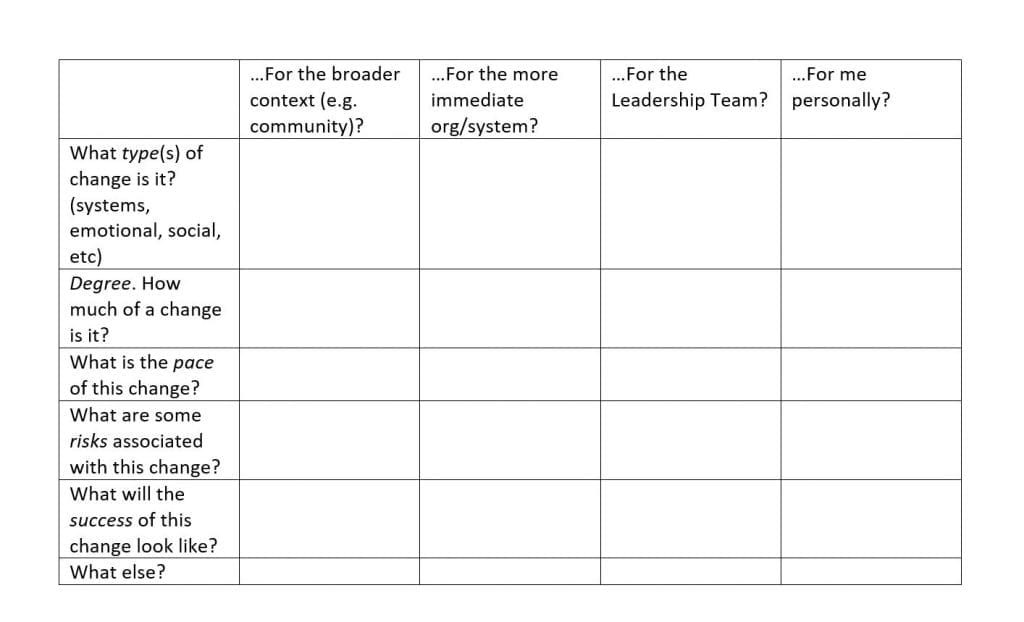“The antidote to exhaustion is not rest, it’s wholeheartedness.” – David Whyte.
This simple yet profound statement has captured the imaginations of The Ministry Collaborative (TMC) staff since we discovered it last spring. At that time, we were all new to pandemic life and experiencing the unending exhaustion that seemed to be synonymous with the pandemic itself. While much has changed since then, the experience of overwhelming exhaustion by clergy remains unchanged, therefore, we decided to put this declaration to the test.
We are currently wrapping up Wholehearted: Transformative Leadership in a Broken World, a successful 6-week virtual cohort of 20 pastors who took a journey of discovery focused on the themes of identity, sabbath, justice, and paradigm shifts through the lens of wholeheartedness. The time has been well spent and has served as a deep well of life-giving connection and energizing reflection. For the next several weeks our staff will give you the “ten cent tour” as we reflect on some of the insights and voices that have guided our time together.
A few weeks ago, I led a conversation with our Wholehearted Leadership cohort on the theme of “Paradigm Shifts.” Given the rather chaotic times and circumstances we inhabit, it would be difficult to overstate the significance of this theme. Here I want to offer two charts that I’ve had in my mind over the last couple of months during numerous conversations regarding change, transition, and shifting ministry paradigms. In sum, we raise the possibility of sustainable action around these themes if we can be more precise. I’m assuming that many of you could elaborate on the models below, adjusting them to better fit your circumstances, or have already developed others. I’d love to know what you’re working on and what you come up with. Let’s collaborate.
This first chart helps me to more clearly grasp or envision change by breaking it down – as much as reasonably possible – into its component parts. For example, many are beginning to undertake concerted efforts to change attitudes around race and racism in their congregations and communities. This chart helps me to think more clearly about how that change might be expressed throughout the intersecting contexts I’m in. And hopefully it would help me to anticipate, lead, and navigate that change more effectively.
This second chart helps me to be more precise in terms of short-term vs long-term and the forest vs the trees dynamic. Yes, these categories will all overlap quite a bit, and many items will fit into multiple boxes at once. For example, I was recently in a conversation with a group of clergy from across the country about how the pandemic was affecting ecclesiology and what it means to be a gathered people. I realized in the midst of that conversation that some people were focused entirely on the short term practical issue of opening their building, while others were speculating about how we might need to rethink the very nature of assembling as church in the 21st century. They were talking past each other. These are related topics of course, but the conversation was largely unproductive because there was little clarity about the angles and perspectives from which people were engaging, and what their priorities were. This seems to be a more frequently occurring phenomenon in our highly uncertain and complex times. I think breaking things down in this way could be especially helpful for church leadership teams as we try to clarity and perspective on the challenges we face.
There are of course many other similar models out there to help us navigate complexity and change in ministry, and I’d love for you share with me and our team what’s been most helpful to you. We’re learning so much from our conversations with you all, and are inspired by your willingness to follow the Spirit so boldly in the face of uncertainty.
*As an additional resource, be sure to check out our recent podcast episode, “Shifting Paradigms: A Wholehearted Leadership Round Table Conversation,” here.










No Comments